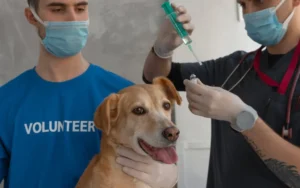Chronic venous insufficiency (CVI) is a growing yet under-discussed condition affecting many Australians, especially those over the age of 50. While often overshadowed by more widely recognized vascular diseases, CVI significantly impacts quality of life and places a heavy burden on Australia’s healthcare system. This article explores the causes, symptoms, treatments, and recent medical advancements in managing chronic venous insufficiency, providing a comprehensive guide tailored to Australian readers.
What Is Chronic Venous Insufficiency
Chronic venous insufficiency is a long-term condition in which veins in the legs cannot efficiently return blood to the heart. It commonly develops when vein walls or valves become damaged or weakened. Instead of blood flowing upward, gravity causes it to pool in the legs, leading to swelling, discomfort, and in advanced cases, skin ulcers.
In Australia, CVI affects approximately 15–25% of adults, with women slightly more prone than men. It is particularly prevalent among people who sit or stand for long periods, those who are obese, and individuals with a family history of venous disease. Importantly, CVI is not merely a cosmetic concern; if left untreated, it can lead to serious complications like deep vein thrombosis (DVT) and leg ulcers.
Common Symptoms to Watch For
One of the challenges in diagnosing chronic venous insufficiency early is the subtle onset of symptoms. Many people mistake the initial signs—tired legs, mild swelling, and visible veins—for routine fatigue or aging.
Key symptoms include
- Persistent swelling in the lower legs or ankles
- Aching, cramping, or throbbing in the legs after prolonged standing
- Itching or flaky skin around the ankles
- Skin discoloration (brown or reddish hue)
- Varicose veins
- Open sores or ulcers, especially near the ankles
These symptoms tend to worsen throughout the day and improve with leg elevation. In advanced stages, the skin can become leathery or hardened due to chronic inflammation.
Who Is at Risk in Australia
Australia’s lifestyle patterns, aging population, and workplace habits are contributing to a rise in CVI cases. Office workers, nurses, hairdressers, and hospitality staff often stand or sit in one position for long periods, increasing their risk.
Major risk factors include
- Being over the age of 50
- Obesity or sedentary lifestyle
- Pregnancy (increased pressure on veins)
- Smoking
- Previous blood clots
- Family history of vein disorders
Australia’s high rates of obesity and increasingly desk-bound workforce are driving up cases across metropolitan and regional areas. According to the Australian Institute of Health and Welfare, venous disorders now account for a significant portion of vascular-related outpatient visits.
Diagnosis and Medical Imaging Advances
Diagnosing chronic venous insufficiency has improved significantly with non-invasive imaging techniques. Duplex ultrasound is now the gold standard for evaluating venous reflux, vein diameter, and valve function. This test is widely available across hospitals and specialized clinics in Australia.
Once diagnosed, the condition is often graded on the CEAP classification system—standing for Clinical-Etiology-Anatomy-Pathophysiology. This grading allows doctors to tailor treatment to the severity of the disease, from mild cosmetic issues to severe ulceration.
In rural or remote areas, telehealth services have enhanced access to venous diagnostics, allowing general practitioners to consult with vascular specialists and coordinate care efficiently.

Treatment Options for Chronic Venous Insufficiency
Treatment for chronic venous insufficiency ranges from conservative therapies to advanced surgical interventions. Early-stage treatment focuses on symptom relief and preventing progression.
Compression Therapy
Compression stockings are the first line of defense. These tight-fitting garments apply graduated pressure to the legs, helping push blood upward. In Australia, Medicare and private health insurance providers often subsidize medical-grade compression wear, making it more accessible to patients.
Wearing compression stockings regularly can drastically reduce swelling, discomfort, and the risk of ulcers. However, adherence can be challenging during hot Australian summers, prompting innovations in breathable compression fabrics.
Medications and Lifestyle Adjustments
In addition to compression, doctors often prescribe medications like venoactive drugs (e.g., diosmin or horse chestnut extract) to strengthen vein walls and reduce inflammation. Lifestyle changes—such as regular walking, leg elevation, weight management, and smoking cessation—can also improve circulation.
Australian health campaigns now include CVI awareness segments in chronic disease programs, encouraging earlier detection through primary care visits.
Minimally Invasive Procedures
For moderate to severe cases, minimally invasive procedures are becoming increasingly popular. Options include:
- Endovenous laser ablation (EVLA): A catheter delivers laser heat to close off faulty veins.
- Radiofrequency ablation (RFA): Similar to EVLA but uses radio waves.
- Sclerotherapy: A chemical is injected into the vein to seal it shut.
These treatments offer high success rates with minimal downtime and are widely available in Australia’s urban vascular centers.
Surgical Vein Stripping (Rare)
In rare, severe cases or when other treatments fail, traditional surgery may be required to remove or ligate the damaged vein. However, this is now less common thanks to modern laser and catheter-based options.
How CVI Affects Daily Life
Living with chronic venous insufficiency can be physically and emotionally draining. Many patients report feelings of heaviness or aching that make it difficult to walk, stand, or sleep. This impacts work productivity and overall well-being.
There’s also a cosmetic aspect—varicose veins, swelling, and discolored skin can lead to embarrassment or social anxiety. Patients often feel that their symptoms aren’t taken seriously until ulcers or severe symptoms appear.
Support groups, both online and in-person, are helping Australian patients cope, share management strategies, and discuss the challenges of navigating the healthcare system.
The Link Between CVI and Other Conditions
CVI is often linked with other circulatory issues, such as
- Deep vein thrombosis (DVT): Poor venous flow increases clot risk.
- Lymphedema: Combined swelling from lymphatic and venous dysfunction.
- Peripheral artery disease (PAD): Shared risk factors and symptoms.
Integrated care is essential. GPs, vascular surgeons, dermatologists, and wound care specialists must work together to manage the whole patient, not just isolated symptoms.
CVI in Australia’s Healthcare Policy
Australia’s public health system has recognized chronic venous insufficiency as a contributor to rising outpatient care costs. While not life-threatening like stroke or heart attack, CVI results in thousands of hospital visits, particularly for ulcer care.
Policy recommendations now call for increased early screening, especially in high-risk populations. Chronic disease management plans funded through Medicare often include vascular assessments for patients over 45.
Additionally, Australia is investing in wound care research to improve outcomes for CVI-related leg ulcers, which are notoriously difficult to heal and often recur.
Technological Innovations in CVI Management
New technologies are improving both diagnosis and treatment of chronic venous insufficiency. Portable handheld ultrasound devices now allow GPs and rural health centers to perform basic vein assessments without needing full hospital equipment.
In urban hospitals, AI-powered imaging software helps detect early valve failure and measure vein wall stiffness. These innovations enable faster diagnosis and better treatment matching.
On the treatment side, biotech companies are developing heat-free vein closure systems, which could reduce patient discomfort and broaden treatment access. Australia is also participating in clinical trials exploring gene therapy and regenerative medicine for vein repair.
Raising Public Awareness in Australia
Despite the high prevalence of CVI, public awareness remains low. Unlike heart disease or cancer, venous health is rarely discussed in mainstream media. Australian vascular associations are now campaigning for better public education.
National health weeks, GP training seminars, and patient education materials aim to improve awareness around symptoms and when to seek care. Social media campaigns and infographics also help normalize discussions around leg health and venous disorders.
Conclusion The Road Ahead for Chronic Venous Insufficiency
Chronic venous insufficiency is a common yet often overlooked health issue affecting thousands of Australians. Left unmanaged, it can lead to pain, mobility issues, and life-altering complications. However, with early detection, proper lifestyle management, and access to modern treatments, most patients can regain comfort and functionality.
Australia’s healthcare system is well-positioned to lead in innovative diagnostics and interventions for CVI. By integrating public awareness, policy action, and medical innovation, the country can help those affected live better, healthier lives.
If you experience persistent leg swelling or discomfort, don’t dismiss it as fatigue. Seek professional advice—early action can prevent long-term damage and improve quality of life.
Sources
- NCBI: Australian CVI prevalence, CEAP classifications, obesity & CVI links racgp.org.auBioMed Central+4PMC+4Verywell Health+4Health+1cotavic.org.au+1
- 9News Sydney: Trump CVI diagnosis details News.com.au
- AP News: Explanation of CVI and diagnosis insights YouTube+49News+4The Australian+4
- Australian Prescriber: Compression therapy routines in Australia journals.cambridgemedia.com.au+4Australian Prescriber+4cotavic.org.au+4
- BMC Geriatrics: Evidence for class 2–3 stockings reducing ulcer recurrence Annals of Vascular Surgery+3BioMed Central+3Wiley Online Library+3
- ANZSVS: CVI & leg ulcer statistics in Australia ANZSVS+1racgp.org.au+1
- Wiley study: Compliance rates with compression stockings Wikipedia+5Annals of Vascular Surgery+5PMC+5
Also read about How AI help in medical Diagnosis.






